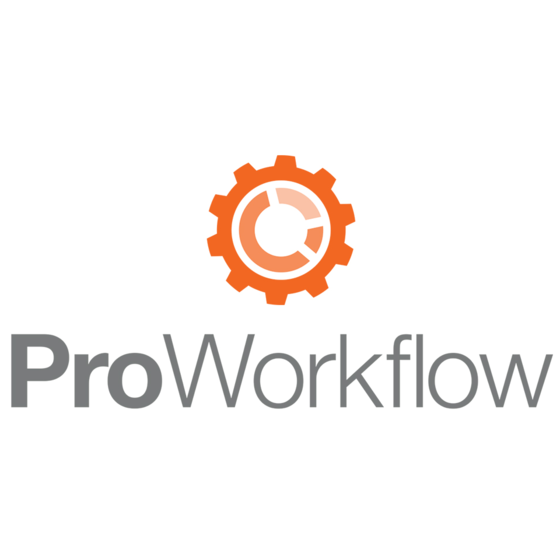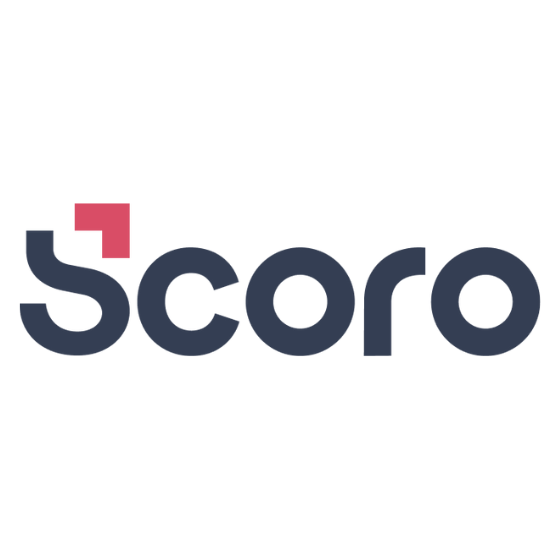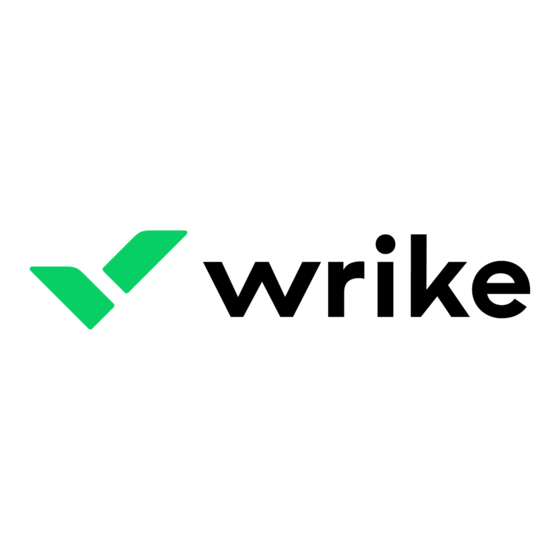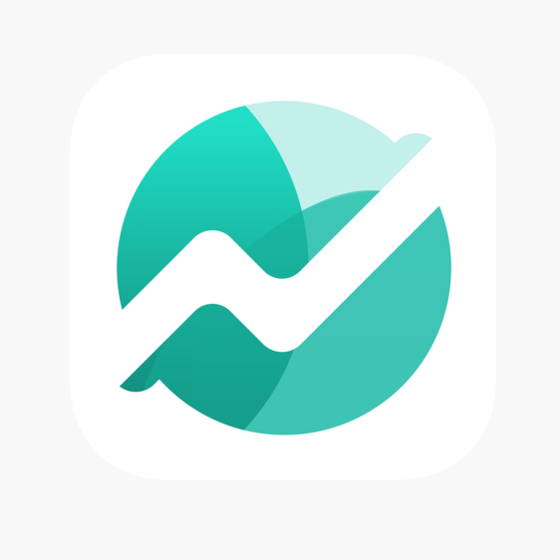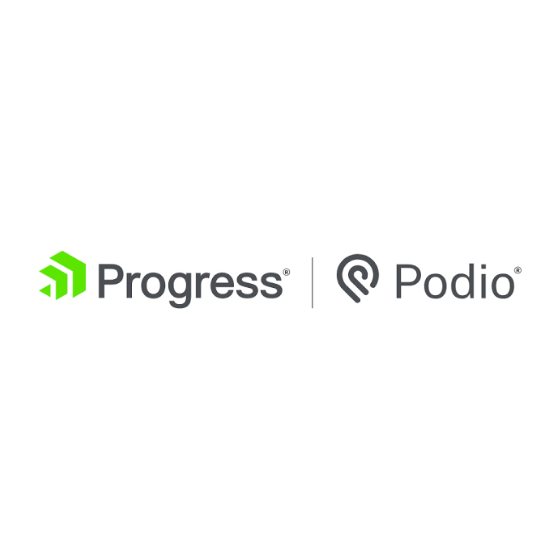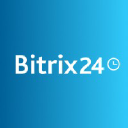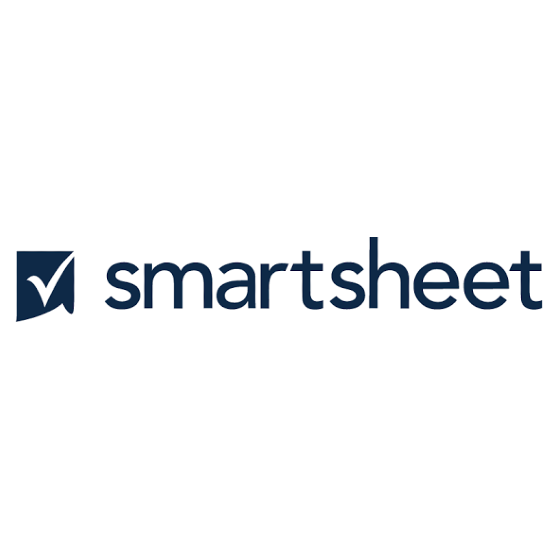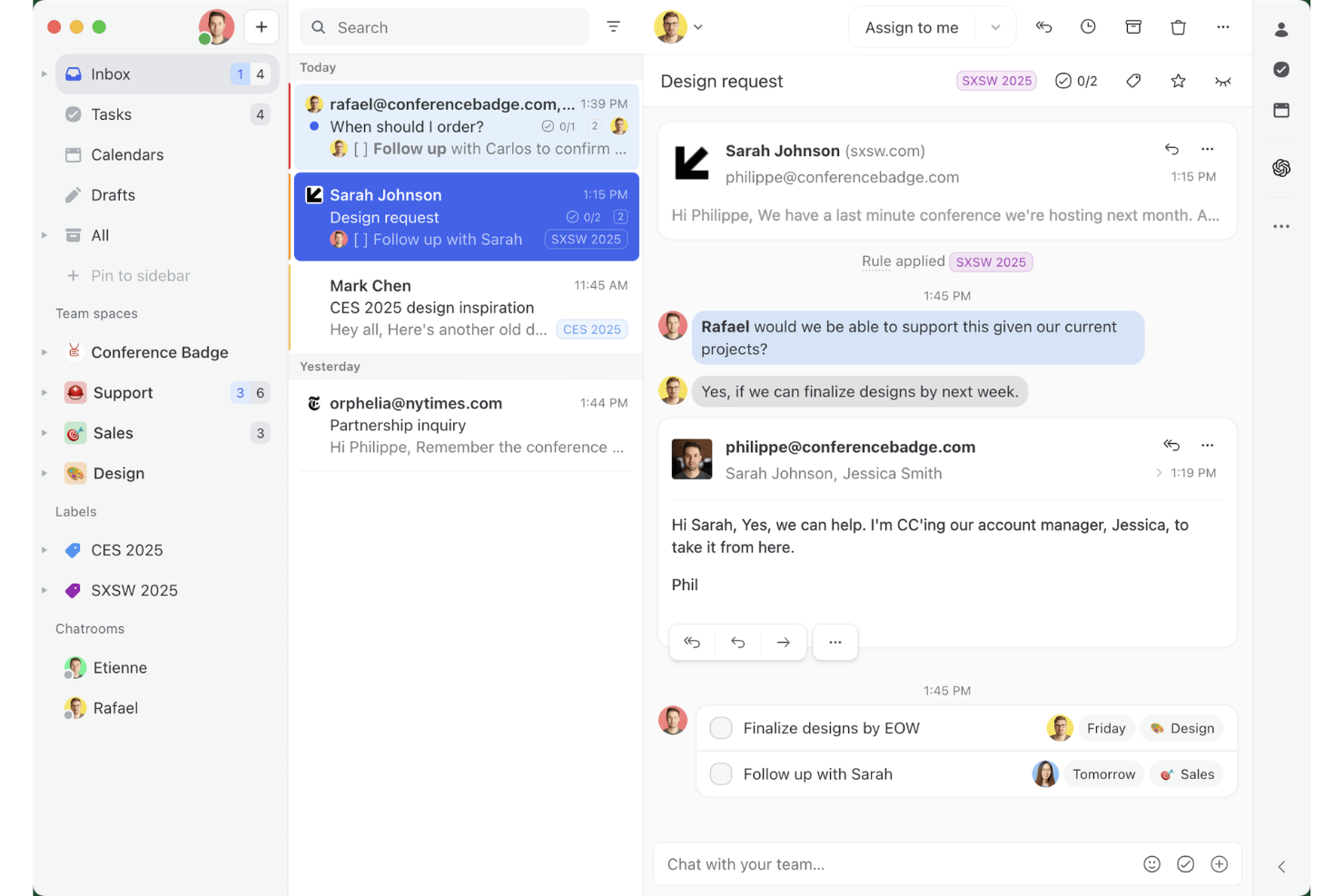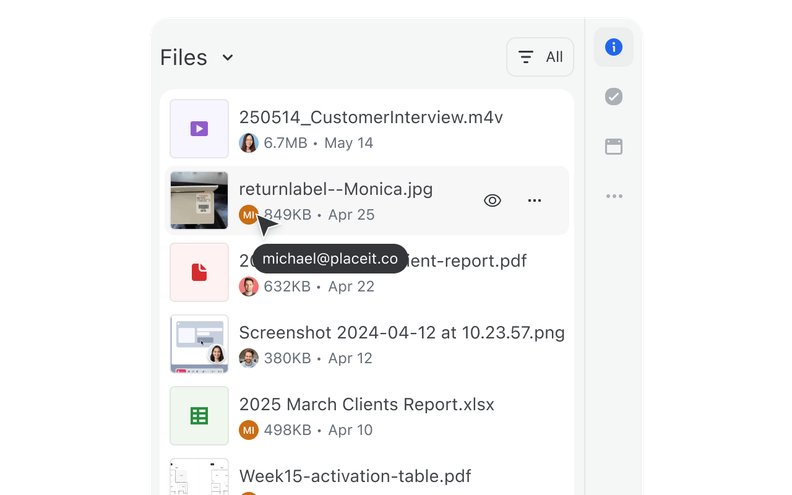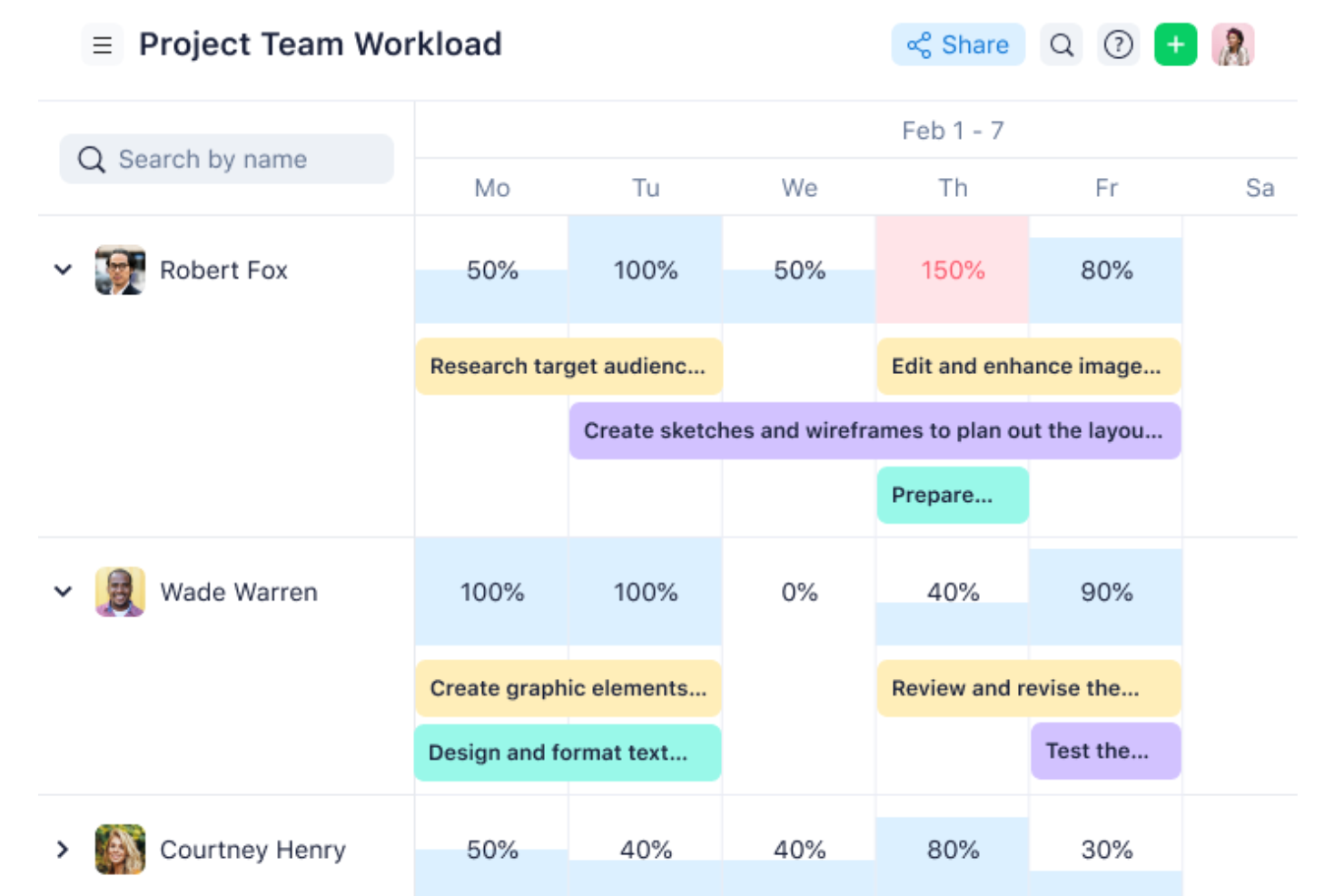Best Project Management Software With Email Integration Shortlist
Here's my pick of the 10 best software from the 20 tools reviewed.
Email is still one of the most common ways teams communicate—but if it’s not connected to your project management tool, things can slip through the cracks. You waste time hunting for updates, chasing replies, or copying info from one system to another.
Project management software with email integration can solve this issue. It keeps conversations tied to tasks and makes it easier to stay on top of what’s happening without switching tools all day.
In this article, I’ll walk you through the best options I’ve tested. Each one connects project tracking with email in a way that helps you and your team stay focused and in sync.
Why Trust Our Project Management Software Reviews
We’ve been testing and reviewing project management software since 2012. As project managers ourselves, we know how critical and difficult it is to make the right decision when selecting software.
We invest in deep research to help our audience make better software purchasing decisions. We’ve tested more than 2,000 tools for different project management use cases and written over 1,000 comprehensive software reviews. Learn how we stay transparent & our review methodology.
Table of Contents
- Best Software Shortlist
- Why Trust Us
- Compare Specs
- Reviews
- Other Project Management Software with Email Integration
- Related Reviews
- Selection Criteria
- How to Choose
- Trends In Project Management Software with Email Integration
- What Is Project Management Software with Email Integration?
- Features
- Benefits
- Costs & Pricing
- FAQs
Best Project Management Software with Email Integration Summary
This comparison chart summarizes pricing details for my top selections for project management software with email integration to help you find the best one for your budget and business needs.
| Tool | Best For | Trial Info | Price | ||
|---|---|---|---|---|---|
| 1 | Best for centralized task management | 14-day free trial | From $20/user/month (billed annually) | Website | |
| 2 | Best for team inbox collaboration | 30-day free trial | From $14/user/month (billed annually) | Website | |
| 3 | Best for comprehensive project oversight | 14-day free trial available | From $19.9/user/month (billed annually) | Website | |
| 4 | Best for in-platform email communication | Free plan available | From $10/user/month (billed annually) | Website | |
| 5 | Best for project management unification | Free plan available | From $7/user/month (billed annually) | Website | |
| 6 | Best for unlimited storage | 14-day free trial | From $1.49/user/month (billed annually) + free plan available | Website | |
| 7 | Best for client work management | Free plan available | From $10.99/user/month (min 3 users, billed annually) | Website | |
| 8 | Best for unified project planning | 4-day free trial | From $45/month (billed annually) | Website | |
| 9 | Best for customizable solutions | Free plan available | From $11.20/month (billed annually) | Website | |
| 10 | Best for business tool integration | Free plan available | From $40/user/month (minimum 5 users) | Website |
-

monday.com
Visit WebsiteThis is an aggregated rating for this tool including ratings from Crozdesk users and ratings from other sites.4.6 -

Smartsheet
Visit WebsiteThis is an aggregated rating for this tool including ratings from Crozdesk users and ratings from other sites.4.4 -

Miro
Visit WebsiteThis is an aggregated rating for this tool including ratings from Crozdesk users and ratings from other sites.4.8
Best Project Management Software with Email Integration Reviews
Below are my detailed summaries of the best project management software with email integration that made it onto my shortlist. My reviews offer a detailed look at the key features, pros & cons, integrations, and ideal use cases of each tool to help you find the best one for you.
ProWorkflow is a versatile project management and time tracking software tailored for industries like marketing, consulting, and IT. It enhances productivity through a range of features including project management, invoicing, and resource planning.
Why I Picked ProWorkflow: I picked ProWorkflow for its strong project management tools, including centralized dashboards that help your team prioritize tasks and collaborate effectively. Its customizable templates simplify project setup, while resource planning features like Kanban and Gantt charts help you allocate staff efficiently and stay on schedule. It also keeps communication smooth between team members and clients.
Standout features & integrations:
ProWorkflow's key features include advanced reporting tools that offer insights into your operations, helping you make informed decisions. The invoicing feature is tightly integrated with project management, simplifying the billing process and ensuring accuracy. Additionally, ProWorkflow offers strong client management capabilities, allowing you to maintain efficient operations and enhance client relationships.
ProWorkflow Integrates with Zapier, Xero, QuickBooks Online, MYOB Business, FreshBooks, MYOB AccountRight, Box, Kashflow, Google Drive, Dropbox, OneDrive, and SharePoint.
Pros and cons
Pros:
- Customizable templates for quick setup
- Robust time and resource tracking
- Intuitive task and project management
Cons:
- Limited features on lower tiers
- Slight learning curve for beginners
Missive is a project management platform that merges email, chat, and task management so teams can handle communication and project workflows in one place. It helps you organize shared inboxes, assign conversations, and collaborate on responses without switching between tools.
Why I Picked Missive: I included Missive in this list because it transforms how teams manage email by turning messages into actionable tasks. For teams handling high volumes of client communication, it keeps discussions structured and transparent through shared inboxes and internal chat threads. I also like that you can collaborate on drafts before sending replies, ensuring every response aligns with your team’s tone and priorities.
Standout features & integrations:
Standout features include shared inboxes for team collaboration, email-to-task conversion, and real-time internal discussions within message threads. It also supports workload balancing, automation rules, and analytics for tracking performance.
Integrations include ChatGPT by OpenAI, HubSpot, Salesforce, Zapier, Zoom, Dropbox, Google Drive, Asana, Trello, GitHub, and Integrately.
Pros and cons
Pros:
- Integrates with 25+ major tools
- Turns emails into actionable tasks
- Centralized team inbox collaboration
Cons:
- Slight learning curve for beginners
- Offline functionality is limited
New Product Updates from Missive
Missive Updates Files & Attachments With a Faster, Unified View
Missive’s newest update introduces a redesigned Files & Attachments experience featuring a unified view, rich previews, improved organization, and faster navigation. These make it easier to browse, filter, and manage files across conversations. For more information, visit Missive's official site.
Scoro is an all-in-one business management software designed to enhance work processes for consultancies, agencies, and professional service firms. It combines project management, customer relationship management (CRM), billing, and reporting into a single platform.
Why I Picked Scoro:
Scoro provides a comprehensive approach to managing projects from start to finish. I like that it has quoting and budgeting, allowing you to create detailed proposals and track project costs. This ensures that your projects stay within budget and helps maintain profitability. Additionally, Scoro's resource planning capabilities enable you to allocate tasks based on your team's actual availability, preventing overbooking and underutilization. The platform also provides shared calendars and a built-in time tracker, making it easier to monitor billable and non-billable hours.
Standout features & integrations:
Scoro's key features include project management tools that give a detailed overview of planned and completed activities, time spent, and billing, as well as income and expenses. The platform also offers automation of routine tasks, such as turning quotes into assigned projects and tasks with just a few clicks. Furthermore, Scoro provides real-time Gantt charts to visualize project progress and manage tasks, dependencies, and events in an always up-to-date view.
Integrations include Gmail, Google Calendar, Microsoft Exchange, QuickBooks, Xero, Stripe, PayPal, Jira, Asana, HubSpot, Salesforce, Dropbox, and Zapier.
Pros and cons
Pros:
- Comprehensive project management features
- Good resource planning and utilization management
- Robust reporting and analytics
Cons:
- Mobile app could be improved
- Some time tracking features are limited to higher-tier plans
New Product Updates from Scoro
Scoro Enhancements for Invoicing and Work Management
Scoro improves invoicing and work management by allowing allocation of time and costs to invoices and customizing project task views. For more information, visit Scoro's official site.
Wrike is solid option for in-platform email collaboration because it offers a project management platform that connects task management with email communication. Wrike helps teams consolidate their work and communications in one place, reducing reliance on external email chains and improving project visibility.
Why I Picked Wrike: I picked Wrike for this list because of its in-platform email communication feature, which allows you to manage external correspondence without leaving the tool. This makes it easier to keep project communications organized and tied directly to tasks. I also appreciate Wrike’s automation tools, which reduce repetitive admin work, helping your team focus on more impactful project activities. These capabilities make Wrike a strong choice for teams looking to centralize work and communication.
Standout features & integrations:
Wrike offers project views like Gantt charts and Kanban boards, along with AI tools for summarizing updates and generating project plans. Its dashboards give you real-time visibility into project progress, while in-platform email helps manage communications without switching between tools.
Integrations include 400+ pre-built native connections, including Microsoft, Google, Dropbox, Salesforce, and Marketo.
Pros and cons
Pros:
- Easily visualize workflow performance
- Individuals and teams can track workloads
- In-app chat to reduce switch cost for collaboration
Cons:
- Limited to 10 workflows per space
- Not suitable for small organizations
New Product Updates from Wrike
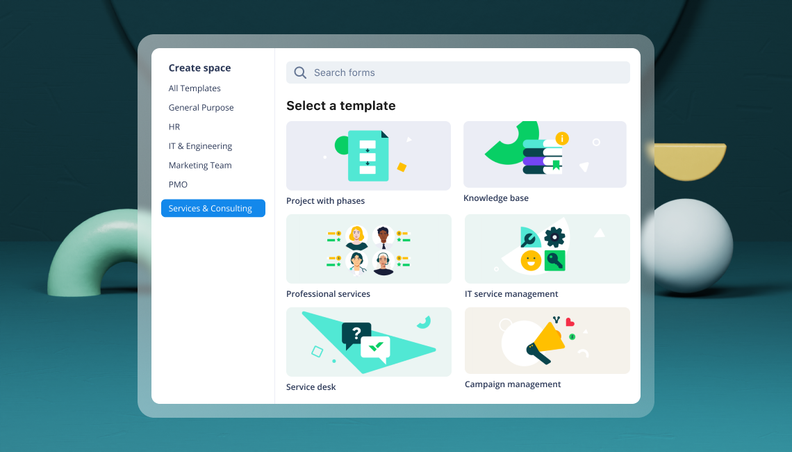
Streamlining Workspaces with New Updates
Wrike announces custom space templates, AI Agents in Wrike Labs, and a new Guage widget to improve project management. For more information, visit Wrike's official site.
Nifty is best for project management unification because it offers a comprehensive suite of features that facilitate collaboration and progress tracking across all stages of a project, all within a single platform.
Why I Picked Nifty:
I chose Nifty for this list because it stands out as a holistic solution for project management, offering a unified space for all project-related activities. Its ability to combine discussions, roadmaps, tasks, and documentation in one place differentiates it from other project management software. I believe Nifty is best for project management unification due to its integrated approach that aligns teams and goals, streamlining processes and reducing the need for multiple tools.
Standout features & integrations:
Nifty's key features include discussions, roadmaps (Gantt Chart), goals, tasks, forms, docs & files, time tracking, and reporting. These features are designed to enhance team collaboration and provide a high level of detail for managing daily work. Nifty integrates natively with Google Docs and offers a variety of views such as Kanban, List, Timeline, Calendar, and Swimlane to accommodate different project management styles.
Nifty integrates with a range of tools, including Asana, Basecamp, ClickUp, Jira, Trello, and Wrike. It also allows for the import of .CSV and Excel sheets, ensuring transition and data synchronization.
Pros and cons
Pros:
- Positive reviews for design and performance
- Flexible views and integrations for various management styles
- Comprehensive suite of project management features
Cons:
- Limited information on the website regarding the minimum number of seats or setup fees
- May have a learning curve for new users due to its extensive features
- Higher starting price point compared to some competitors
Freedcamp is a project management platform that offers unlimited file storage across all its plans, ensuring that teams can manage their projects without worrying about running out of space.
Why I Picked Freedcamp:
I chose Freedcamp for the list because it offers a robust set of features that cater to various project management needs while also providing unlimited storage, which is a significant advantage for teams with extensive file management requirements. I believe Freedcamp is best for unlimited storage because it removes the constraints on file space, allowing teams to focus on their work without the overhead of managing storage limits.
Standout features & integrations:
Freedcamp's key features include task management, time tracking, milestones, discussions, and an issue tracker. It also has a built-in calendar and file management system with unlimited storage, which is particularly useful for teams that handle large volumes of documents and media files.
Freedcamp integrates natively with Google Drive, Dropbox, OneDrive, Zapier, Google Calendar, Outlook, Slack, and supports email integration, allowing users to create tasks and discussions directly via email.
Pros and cons
Pros:
- Wide range of integrations
- A generous free tier with essential features
- Unlimited storage on all plans
Cons:
- Some integrations are only available on higher-tier plans
- Annual billing required for the best rates
Teamwork is a project management platform tailored for client work management across various industries. It's recognized for its comprehensive suite of features that streamline project planning, resource allocation, and collaboration.
Why I Picked Teamwork:
I chose Teamwork for its robust set of features that specifically cater to the needs of client-focused teams. Its ability to manage multiple aspects of client work, from project planning to time tracking, sets it apart from other project management tools. I believe Teamwork is best for client work management because it provides a centralized platform for managing all client-related activities, ensuring that every task, timeline, and billable minute is accounted for efficiently.
Standout features & integrations:
Teamwork's standout features include time tracking, resource management, milestone setting, and task customization, which are essential for managing client projects effectively. It also offers various views such as lists, kanban boards, tables, and Gantt charts to suit different user preferences.
Teamwork integrates natively with Slack, Zapier, MS Teams, Google Drive, QuickBooks, HubSpot, and other tools, making it a versatile platform for integrating with existing workflows.
Pros and cons
Pros:
- Integrates with a wide range of tools
- Customizable for various client services businesses
- Comprehensive project management features
Cons:
- Limited storage on the free plan
- Minimum user requirement for paid plans
ProofHub stands out as the best for unified project planning because it centralizes all project aspects, enabling teams to plan, execute, track, and manage projects from start to finish in one place.
Why I Picked ProofHub:
I chose ProofHub for the list because of its robust set of features that cater to various teams and workflows, making it a versatile tool for project management. Its ability to bring together tasks, discussions, Gantt charts, and time tracking under one roof makes it a unified solution for planning and executing projects. I believe ProofHub is best for unified project planning because it provides a single source of truth for all project-related information, which is crucial for maintaining project coherence and ensuring that all team members are on the same page.
Standout features & integrations:
ProofHub's most important features include task management with boards and table views, Gantt charts for setting dependencies and tracking deadlines, and collaboration tools like discussions, chat, and proofing. These features are designed to streamline project planning and execution, enhance communication among team members, and improve overall productivity.
ProofHub integrates natively with several tools, including Dropbox, Google Drive, Box, OneDrive, and it also offers API access for custom integrations. The software's email integration allows users to become part of discussions, add tasks, and upload files without logging into their ProofHub account.
Pros and cons
Pros:
- Wide range of integrations and collaboration tools
- Flat pricing with no per-user fee
- Unified project planning and execution
Cons:
- May not be suitable for very large enterprises with needs beyond the Ultimate Control plan
- Limited to 40 projects in the Essential plan
Podio is a versatile project management software that integrates customizable workflows, team communication, and data management in one user-friendly platform.
Why I Picked Podio:
I chose Podio for the list because it excels in offering customizable solutions that cater to the unique needs of different teams and projects. I believe Podio is best for customizable solutions due to its ability to be tailored extensively, providing a personalized approach to project management that can align with any workflow.
Standout features & integrations:
Podio's standout features include task management, automated workflows, and data visualization, which are all highly customizable.
Podio integrates natively with tools such as Google Drive, Dropbox, Evernote, Zendesk, FreshBooks, Campaign Monitor, GoToMeeting, and more, facilitating a connected and efficient work environment.
Pros and cons
Pros:
- Free plan for small teams
- Comprehensive email integration
- Customizable workflows and apps
- Free plan for small teams
- Comprehensive email integration
- Customizable workflows and apps
Cons:
- Annual billing may not suit all budgets
- May require technical skill for complex customizations
- Annual billing may not suit all budgets
- May require technical skill for complex customizations
Bitrix24 stands out as the best for business tool integration due to its extensive set of features that allow for connectivity with a variety of business applications, enhancing workflow automation and data synchronization across different platforms.
Why I Picked Bitrix24:
I chose Bitrix24 for this list because it offers a robust suite of tools that cater to various aspects of project management, CRM, and team collaboration. Its ability to integrate with a multitude of business tools makes it a versatile choice for organizations looking to centralize their operations. I believe Bitrix24 is best for business tool integration because it not only provides a wide array of native integrations but also supports API connectivity, allowing for custom integrations tailored to specific business needs.
Standout features & integrations:
Bitrix24's standout features include task and project management tools such as Kanban boards, Gantt charts, and time tracking. It also offers customer relationship management, document management, and employee engagement tools.
Bitrix24 integrates natively with several tools to enhance its functionality. These integrations include popular services such as Google Drive, Microsoft Office 365, Dropbox, Mailchimp, Xero, QuickBooks, Zapier, Slack, Zoom, and Stripe.
Pros and cons
Pros:
- AI-powered assistant for enhanced task management
- Extensive integration capabilities with other business tools
- Comprehensive project management features
Cons:
- The abundance of features might be overwhelming for small projects
- Some users may find the interface complicated
- Can be complex to set up for new users
Other Project Management Software with Email Integration
Here are some additional project management software with email integration options that didn’t make it onto my shortlist, but are still worth checking out:
- Ravetree
For email-to-task conversion
- Redmine
For open-source flexibility
- Kanbanize
For enterprise agility
- Notion
For notes and documentation
- GanttPRO
For Gantt chart planning
- Celoxis
For project analytics
- Hive
For proofing and approvals
- Jira Service Management
For team tracking and planning
- VivifyScrum
For agile teams seeking simplicity
- monday.com
For visual project planning
Project Management Software with Email Integration Selection Criteria
When selecting the best project management software with email integration to include on this list, I considered common buyer needs and pain points like missed communications and having to switch between email and project tracking tools. I also used the following framework to keep my evaluation structured and fair:
Core Functionality (25% of total score)
To be considered for inclusion in this list, each solution had to fulfill these common use cases:
- Sending and receiving emails within the platform
- Linking emails to tasks or projects
- Automatically turning emails into tasks
- Notifying users of task updates via email
- Syncing with popular email platforms like Gmail or Outlook
Additional Standout Features (25% of total score)
To help further narrow down the competition, I also looked for unique features, such as:
- Two-way email sync with threading
- Shared inboxes for project-related emails
- AI-based email summarization
- Email templates for project updates
- Custom email triggers based on task status
Usability (10% of total score)
To get a sense of the usability of each system, I considered the following:
- A clean and simple interface
- Clear navigation between email and project tools
- Minimal clicks to complete tasks
- A logical layout of communication history
- Mobile app usability
Onboarding (10% of total score)
To evaluate the onboarding experience for each platform, I considered the following:
- Availability of self-paced training resources
- Access to setup templates for email-task linking
- Interactive product tours or walkthroughs
- Clear migration support for existing email threads
- Live chat or email onboarding support
Customer Support (10% of total score)
To assess each software provider’s customer support services, I considered the following:
- Response time via chat or email
- Availability of help center articles
- Option to contact support during setup
- Access to a support community or forum
- Tiered support options by plan
Value For Money (10% of total score)
To evaluate the value for money of each platform, I considered the following:
- Features offered at each pricing tier
- Email integration included in free or base plans
- Transparent pricing pages
- Cost compared to similar tools
- Trial or free plan availability
Customer Reviews (10% of total score)
To get a sense of overall customer satisfaction, I considered the following when reading customer reviews:
- Mentions of email integration reliability
- Comments on time saved using the tool
- Praise for ease of communication within the platform
- Feedback on integration setup experience
- Ratings across multiple review sites
How to Choose a Project Management Software with Email Integration
It’s easy to get bogged down in long feature lists and complex pricing structures. To help you stay focused as you work through your unique software selection process, here’s a checklist of factors to keep in mind:
| Factor | What to Consider |
| Scalability | Make sure the software can grow with your team. Look for flexible user limits, feature add-ons, and pricing plans that support small to large teams. |
| Integrations | Check if the software works with your current tools like Gmail, Outlook, Slack, or CRMs. Strong integrations reduce manual work and keep everything in sync. |
| Customizability | Choose a tool that lets you adjust workflows, tags, and email-task rules to match how your team works. One size rarely fits all. |
| Ease of Use | Look for a clean layout and features that don’t require a steep learning curve. You should be able to send, receive, and link emails to tasks without extra steps. |
| Budget | Compare plans to see if email features are included or locked behind higher tiers. Free trials can help you test before committing. |
| Security Safeguards | Make sure the platform supports encryption, role-based access, and compliance standards like SOC 2 or GDPR if your team handles sensitive information. |
| Task Linking | Look for tools that automatically link email threads to specific tasks or projects so you don’t lose context. |
| Mobile Access | If your team works on-the-go, make sure the email integration works smoothly on mobile apps and doesn’t strip down important features. |
Trends in Project Management Software with Email Integration
In my research, I sourced countless product updates, press releases, and release logs from different project management software with email integration vendors. Here are some of the emerging trends I’m keeping an eye on:
- AI-Powered Email Summaries: More tools are using AI to break down long email chains into short, readable summaries. This helps teams stay updated without digging through threads.
- Smart Email-to-Task Parsing: Software is getting better at detecting task details in emails—like due dates, priorities, and assignees—and automatically turning them into structured tasks with minimal input.
- Conversation Threading Within Tasks: Instead of attaching a single email, platforms are embedding entire email threads inside tasks. This gives everyone on the team full context without switching platforms.
- Role-Based Email Controls: Teams can now control who gets notified or can respond to project-linked emails, helping reduce inbox clutter and prevent unnecessary back-and-forth.
- Declining Focus on Internal Messaging: More products are shifting away from built-in chat features and focusing on making email work better within project workflows, reducing tool overlap.
What Is Project Management Software with Email Integration?
Project management software with email integration is a digital tool that combines traditional project management functions with direct email capabilities. It is utilized by project managers and teams to streamline communication and task management within a single platform. The software serves to connect project workflows with email correspondence, allowing users to manage projects and communicate with team members and stakeholders directly through the software.
Components of this software include task assignment via email, progress updates, and the ability to attach files and discussions to specific project tasks. This integration overall aims to centralize project information and correspondence, making it accessible for team members to collaborate effectively without switching between separate applications.
Features of Project Management Software with Email Integration
When selecting project management software with email integration, keep an eye out for the following key features:
- Two-way email sync: Lets you send and receive emails directly within the project management platform using your existing email address.
- Email-to-task conversion: Automatically turns incoming emails into tasks with assigned team members, due dates, and priority levels.
- Threaded email history: Embeds complete email conversations in tasks so team members can see the full context without switching tools.
- Custom email triggers: Sends automatic emails when task statuses change or deadlines approach to keep everyone informed.
- Shared inbox integration: Connects a team inbox to a project so all related emails are accessible in one place.
- Attachment capture: Saves email attachments directly to relevant tasks or project folders for easy access.
- Sender tagging and filtering: Helps categorize incoming emails by sender or subject to reduce clutter and improve focus.
- Internal and external recipient options: Allows teams to manage communication with both colleagues and clients from within the project tool.
- Email tracking and read receipts: Shows who’s opened or responded to important project-related emails.
- Reply from task view: Enables users to reply to emails directly within the task window to keep everything in context.
Benefits of Project Management Software with Email Integration
Implementing project management software with email integration can provide several benefits for your team and your business. Here are a few you can look forward to:
- Less context switching: Your team can manage tasks and emails in one place instead of bouncing between apps.
- Fewer missed updates: Automatic email-to-task conversion and notifications help make sure important info doesn’t fall through the cracks.
- Clearer communication: Threaded email history inside tasks gives everyone access to the full conversation.
- Faster task creation: Incoming emails can become tasks instantly, saving time on manual entry.
- Better client visibility: External emails tied to projects keep client communication visible to the whole team.
- More organized files: Attachments sent via email land in the right tasks, so you’re not digging through inboxes to find them.
- Easier team collaboration: Everyone can see and reply to project-related emails without needing direct access to the original message.
Costs & Pricing of Project Management Software with Email Integration
Selecting project management software with email integration requires an understanding of the various pricing models and plans available. Costs vary based on features, team size, add-ons, and more. The table below summarizes common plans, their average prices, and typical features included in project management software with email integration solutions:
Plan Comparison Table for Project Management Software with Email Integration
| Plan Type | Average Price | Common Features |
| Free | $0 | Unlimited users (some with limitations on the number of projects or seats), basic task and project management features, email to task conversion, email notifications |
| Basic | $5 - $10/user/month | Task visualization on Kanban boards, time tracking (may require an add-on), some level of email integration, limited storage space |
| Standard | $8 - $14/user/month | Advanced collaboration tools, enhanced email integration features, more storage space than Basic plans, access to more project views and management tools |
| Pro | $9.80 - $27/user/month | Comprehensive project management features, full email integration with task conversion and notifications, workload management, advanced reporting and analytics |
| Business | $7 - $32/user/month | Designed for professional businesses, advanced resource management tools, customizable workflows and integrations, enhanced security features |
| Enterprise | Custom Pricing | Tailored for large businesses, quality security features, premium APIs and integrations, advanced support and training services |
Project Management Software with Email Integration FAQs
Here are a few frequently asked questions I wanted to cover for you.
How does email integration enhance project management?
Email integration in project management software allows for direct communication within the project’s framework, which can improve collaboration among team members. It enables the tracking of conversations related to specific tasks or projects and ensures that important information is not lost in separate email inboxes. This can lead to better organization and more efficient project execution.
Can I integrate my existing email with any project management software?
Not all project management software offers email integration, and compatibility may vary. It’s important to check whether the software supports integration with your current email provider. Many leading project management tools do offer integration with popular email services like Gmail and Outlook.
Does email integration allow for task creation from emails?
Yes, many project management tools with email integration offer the ability to create tasks directly from emails. This feature can significantly improve workflow by allowing team members to quickly convert email content into actionable items within the project management system.
Is it possible to customize email notifications from the project management software?
Yes, most project management software with email integration allows users to customize email notifications. Users can typically choose the types of updates they want to receive, how often they receive notifications, and which project activities should trigger an email alert.
Are there any security concerns with integrating email into project management software?
Integrating email into project management software does raise security considerations. It’s important to ensure that the software provides robust security measures to protect sensitive information. Look for features like encryption, secure login protocols, and compliance with industry-standard security certifications.
What Next?
Want to connect with other digital project managers to share resources and best practices? Join our membership community and get access to 100+ templates, samples, and examples and connect with 100s of other digital project managers in Slack.


